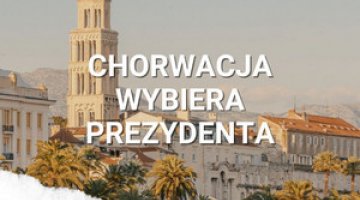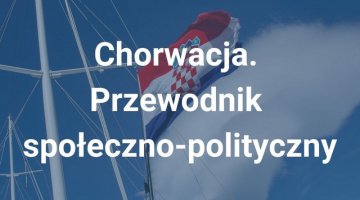Croatia: the difficult compromise government
On 22 January, the Croatian parliament passed a vote of confidence in the government led by the independent technocrat Tihomir Oreskovic. His cabinet is formed by the right-wing Patriotic Coalition centred around the Croatian Democratic Union (HDZ) led by Tomislav Karamarko and the Most platform which represents liberal economic views and which is led by Bozo Petrov. The new government has promised economic reforms, a return to an active historical policy and coming to terms with the Communist period, and, as regards foreign policy, strengthening the pro-Atlantic vector and co-operation with Central European countries.
However, the new government may be unstable, given the different priorities each coalition partner has and the ambitions of the leaders of the two groupings. HDZ focuses above all on historical policy and wants to control the law enforcement agencies. It is also reluctant to conduct radical public sector and economic reforms; and these are the main proposal on Most’s agenda. Furthermore, the prime minister himself does not have a sufficient political base, and Karamarko will make attempts to weaken the position of him and to marginalise its coalition partner.
The complicated coalition negotiations
There was no clear winner of the parliamentary election in Croatia last November. The two main forces on the Croatian political scene – the coalition centred around the right-wing HDZ party and the alliance of left-wing forces forged by the Social Democratic Party (SDP) which governed the country until recently – had similar results (59 and 56 seats). Despite its involvement in numerous corruption scandals, HDZ achieved quite a good result in the election because of the public’s disillusionment with SDP’s economic policy. The force that decided on the shape of the coalition was the pro-reform platform Most, an internally diversified alliance of local activists, which was taking part in its first parliamentary election. Most decided to form an alliance with HDZ because most of its activists share conservative views and would view a coalition with the political left – who have liberal moral standards – as being unacceptable.
However, the coalition negotiations revealed significant differences in the political manifestos of the two groupings. This led to a split in Most; seven of its nineteen MPs left the party. Most pushed through the proposal that an independent prime minister should be nominated. This post was taken by HDZ’s candidate, Tihomir Oreskovic, a businessman who has spent the greater part of his life in Canada. Most has also been placed in charge of six out of the twenty ministries, including the Ministry of Internal Affairs and the Ministry of Justice, which are viewed as the most important in Croatia. However, it withdrew its numerous demands for ambitious reforms to be carried out, including the decentralisation of the state. The other ministries have been taken by HDZ, and the leaders of both groupings were nominated deputy prime ministers. The HDZ-Most coalition does not have a strong majority in parliament. The government would not have won the vote of confidence without the support of MPs from several smaller parties and national minorities (the coalition was backed by 83 out of 151 MPs).
The economy as the main challenge
The main challenge for the government will be accelerating economic growth after the period of recession in 2008–2014 and reducing the rapidly growing public debt (from 33.5% of GDP in 2008 to 88% of GDP in 2014). The prime minister has declared that his priorities will include restricting budget deficit and the unemployment rate (its present level being 16.6% – one of the highest in the EU), especially among young people (in 2014 it reached 46%). Another declared priority will be support for Croatian exports which, according to the government’s promises, will grow by 30% in four years. These objectives are expected to be achieved through tax cuts and para-fiscal charges, as well as via investments backed up with EU funds in the three priority areas: tourism, energy and infrastructure.
However, the government’s economic agenda does not look like a comprehensive plan but more like a set of general slogans. It will be difficult to reconcile the proposals of reducing the budget deficit and boosting investments (including the rapid construction of an LNG terminal). HDZ also opposes, amongst other things, a thorough reconstruction of the public sector and state administration, since this would entail redundancies or the privatisation of state-owned companies. It is also unlikely that exports will grow given the low competitiveness of the Croatian economy. The fact that a businessman has been nominated prime minister is intended to improve Croatia’s image among foreign investors and international financial institutions. This will also allow HDZ to put the responsibility for possible failures on his shoulders.
Changes in foreign policy
Since the political right took power, the accents will be shifted in foreign policy. President Kolinda Grabar-Kitarovic (in office since 2015), whose political background was in HDZ, will play an important role in creating foreign policy. Most and Prime Minister Oreskovic have not shown any serious ambitions in this area.
The new team emphasise that they will want to revive trans-Atlantic contacts and strengthen Croatia’s position inside the EU and NATO (partly through the modernisation of the armed forces). Besides maintaining strong links with Germany, priority will be given to enhancing co-operation within the Baltic–Adriatic–Black Sea triangle, above all with Poland. It should be expected that relations with Hungary, which cooled under the previous government, will improve significantly, given the traditionally close co-operation between HDZ and Fidesz. Zagreb will attach less weight to co-operation with the Balkan states. Most likely, relations with Serbia will become more strained due to HDZ’s cultivation of the memory of the 1991–1995 war. The centre-right parties also emphasise their strong desire to protect the interests of ethnic Croats abroad, and this will affect its policy towards Bosnia and Herzegovina. The new Croatian government will also concentrate their efforts on strengthening border controls on the so-called “Balkan route” in co-operation with their neighbours.
Is the Croatian government doomed to instability?
Tihomir Oreskovic has no political base of his own and will have problems controlling and coordinating the activity of individual ministries. Most likely, the prime minister will have influence on nothing more than economic policy. Signs of this include Oreskovic’s manifesto which was focused on economic issues alone, and the way the coalition negotiations were conducted, in which the prime minister participated to a limited extent. Deputy Prime Minister Karamarko, who wanted to become the head of government, will make efforts to weaken the prime minister’s position and marginalise the coalition partner Most. It will be essential for HDZ to take control of defence and security policy and of the law enforcement agencies which partly report to Most. Karamarko made a statement after the government was sworn in that HDZ lost 5 to 6 seats in parliament due to electoral fraud; this can be understood as a threat addressed to its coalition partner. The HDZ leader certainly does not rule out a snap election in case Most opposes Karamarko’s dominance in areas which are of key importance for him.




